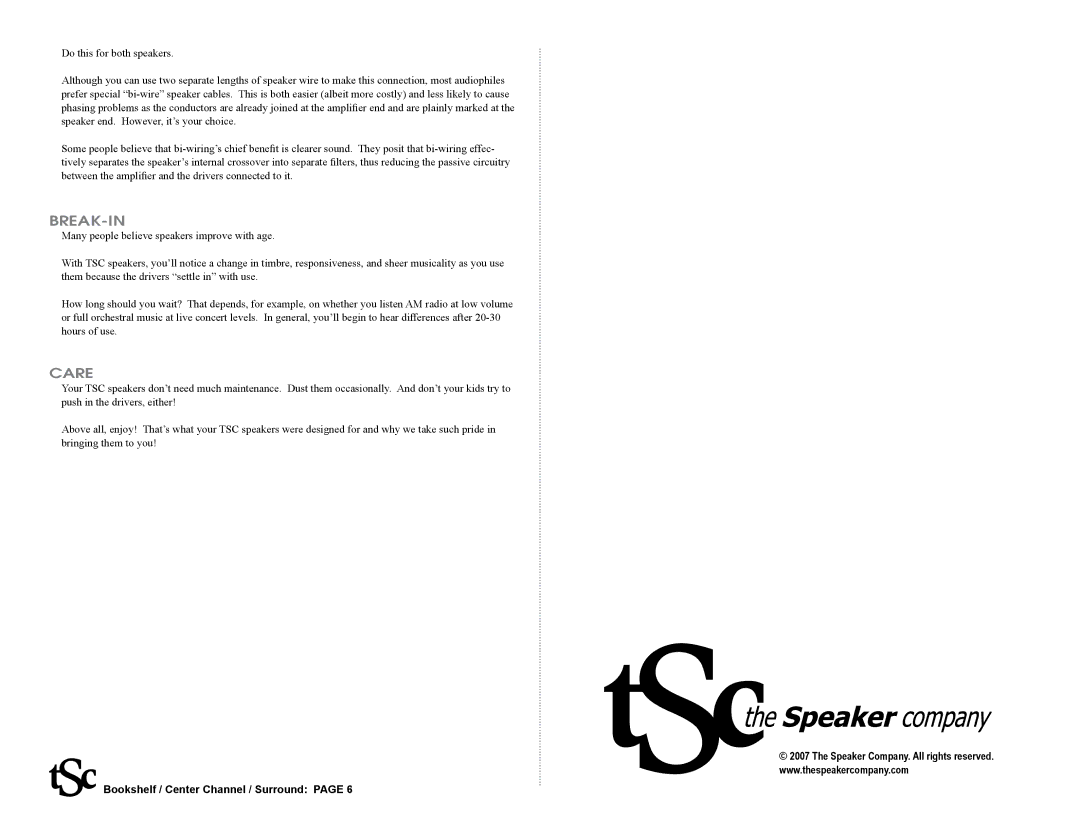
Do this for both speakers.
Although you can use two separate lengths of speaker wire to make this connection, most audiophiles prefer special
Some people believe that
Break-In
Many people believe speakers improve with age.
With TSC speakers, you’ll notice a change in timbre, responsiveness, and sheer musicality as you use them because the drivers “settle in” with use.
How long should you wait? That depends, for example, on whether you listen AM radio at low volume or full orchestral music at live concert levels. In general, you’ll begin to hear differences after
Care
Your TSC speakers don’t need much maintenance. Dust them occasionally. And don’t your kids try to push in the drivers, either!
Above all, enjoy! That’s what your TSC speakers were designed for and why we take such pride in bringing them to you!
© 2007 The Speaker Company. All rights reserved. www.thespeakercompany.com
